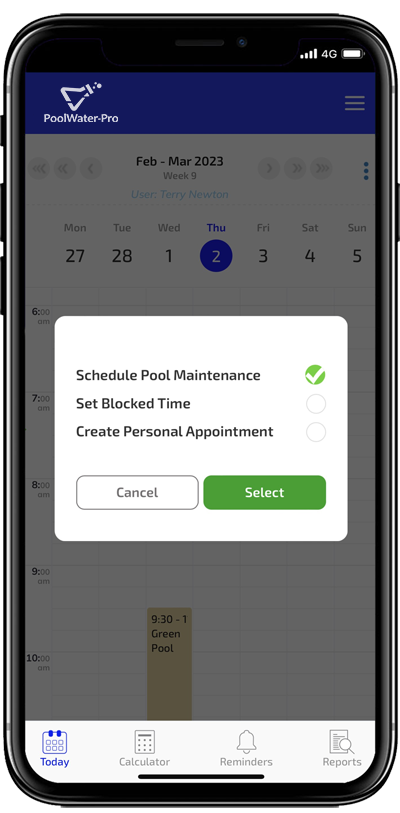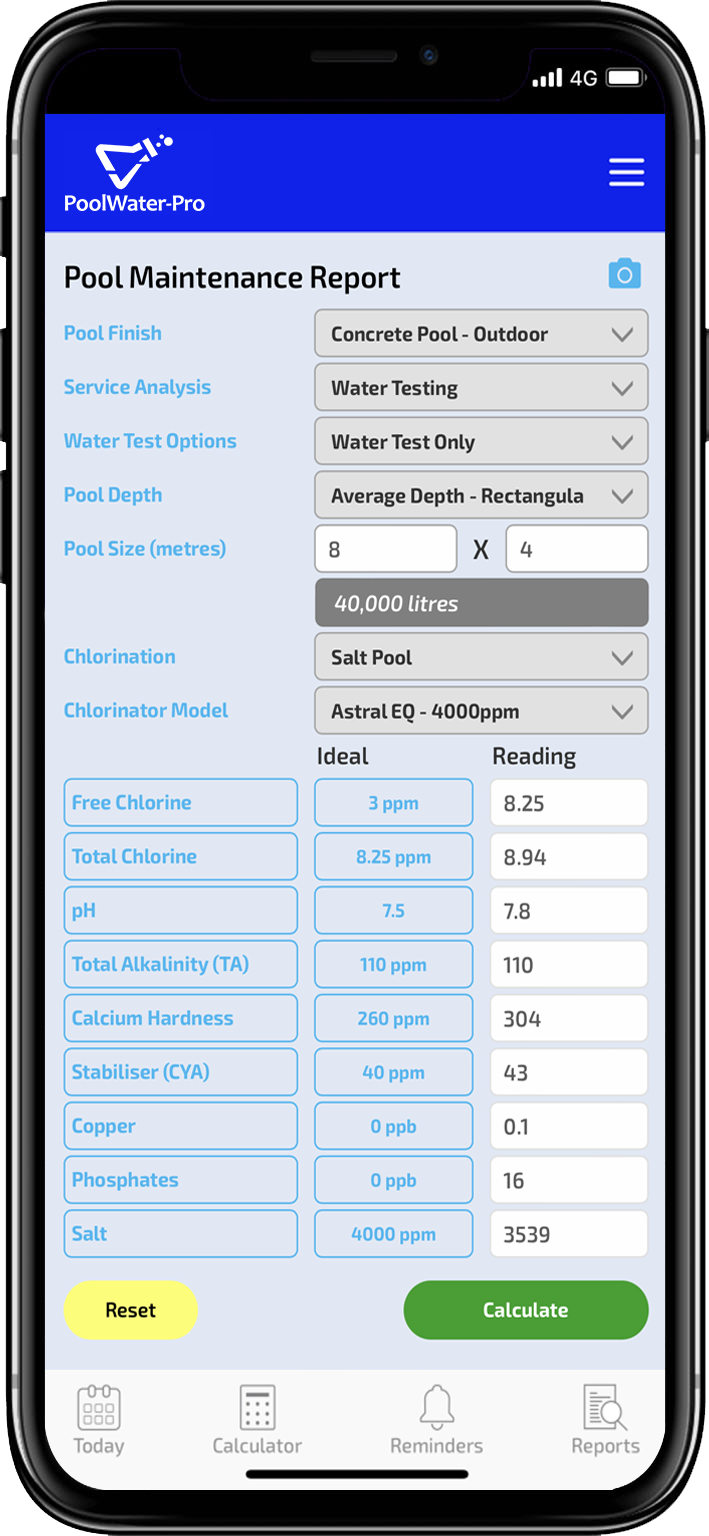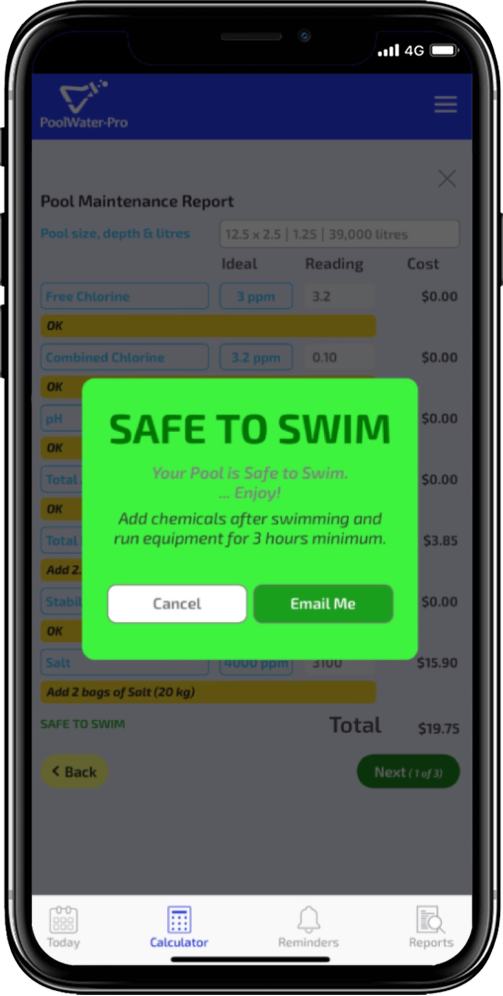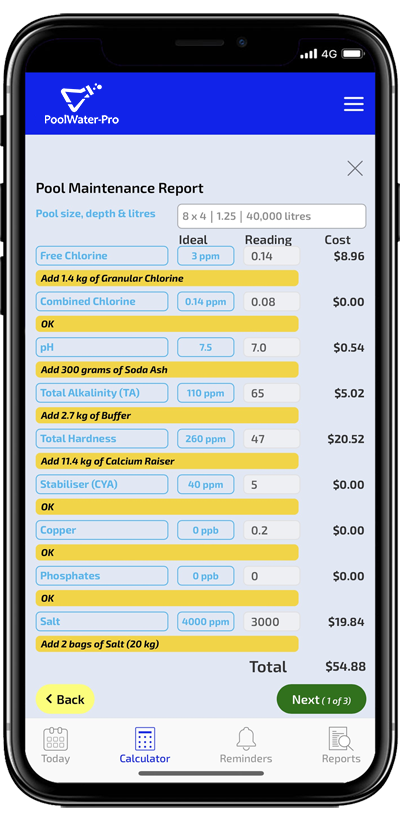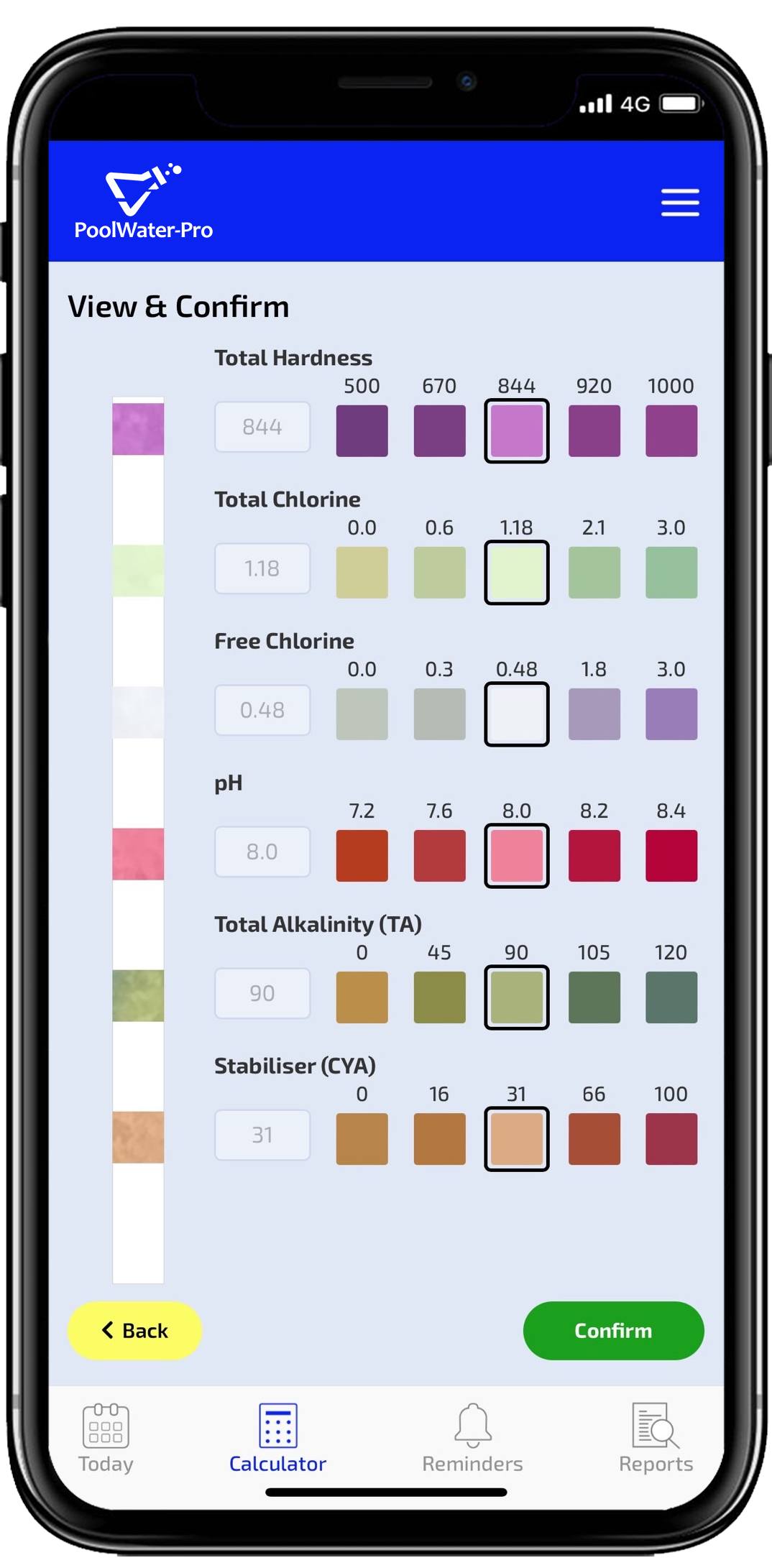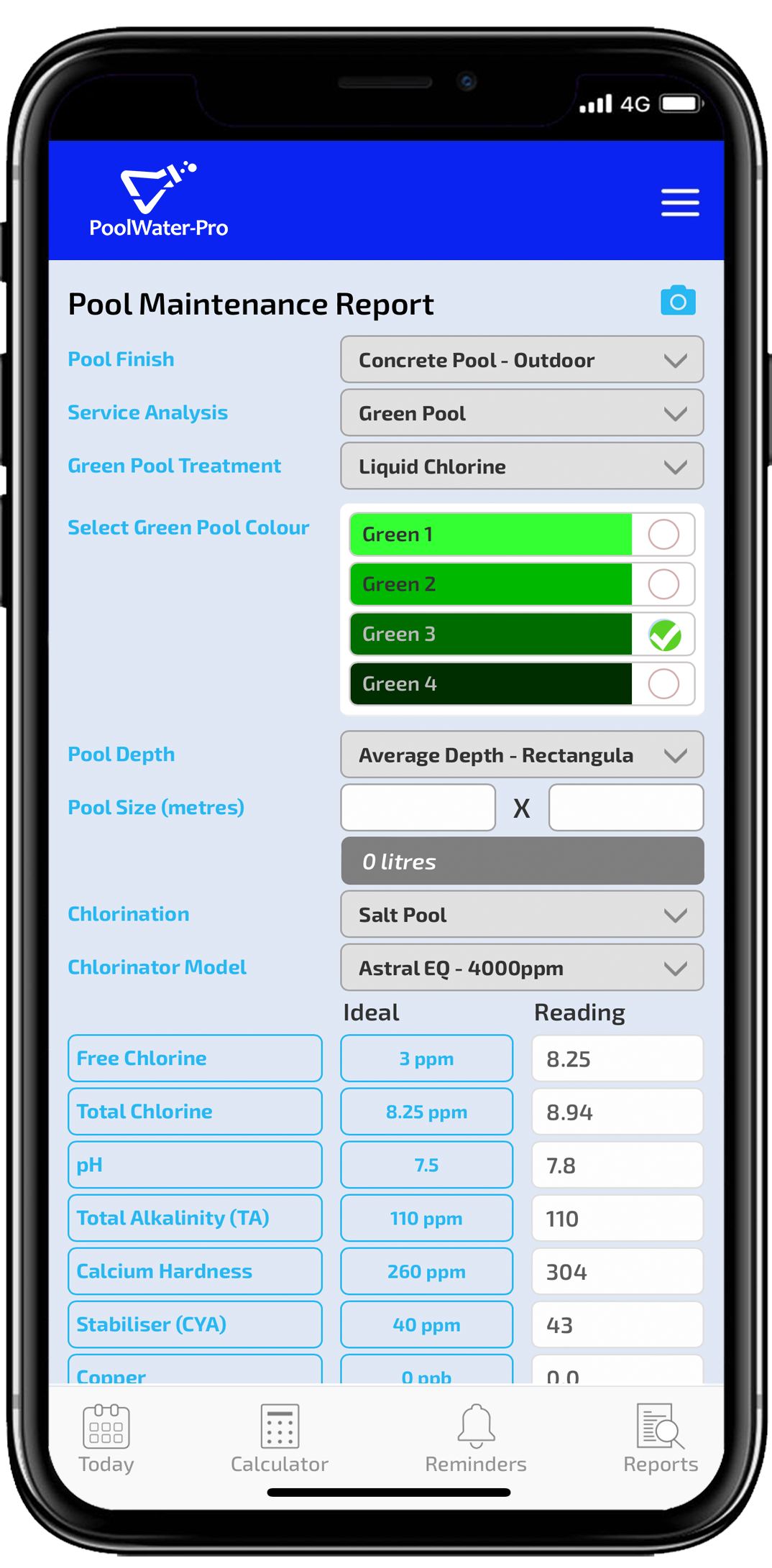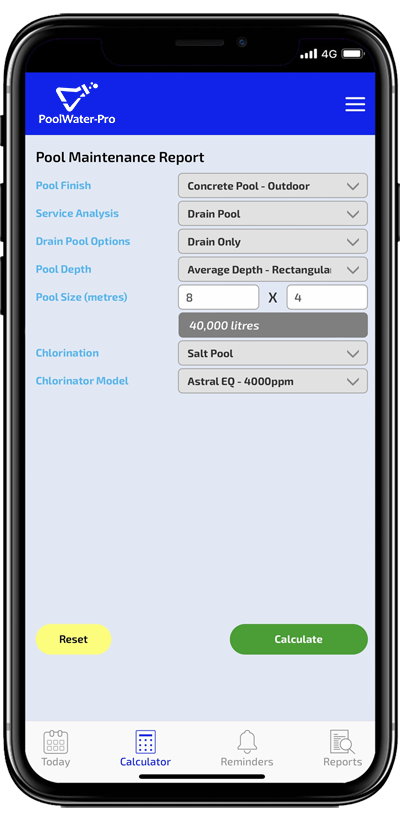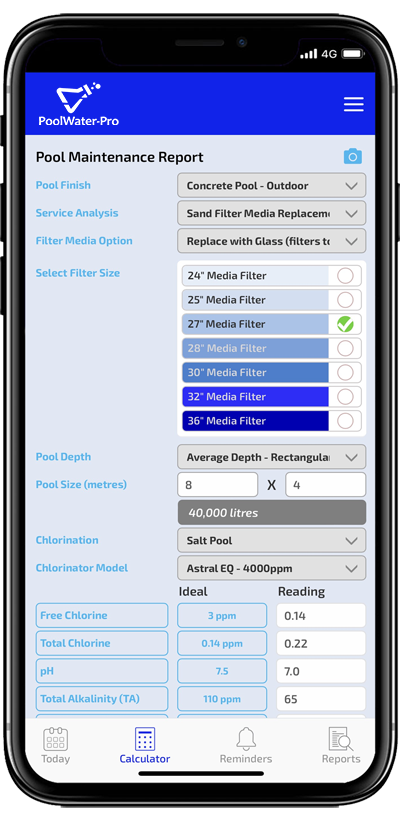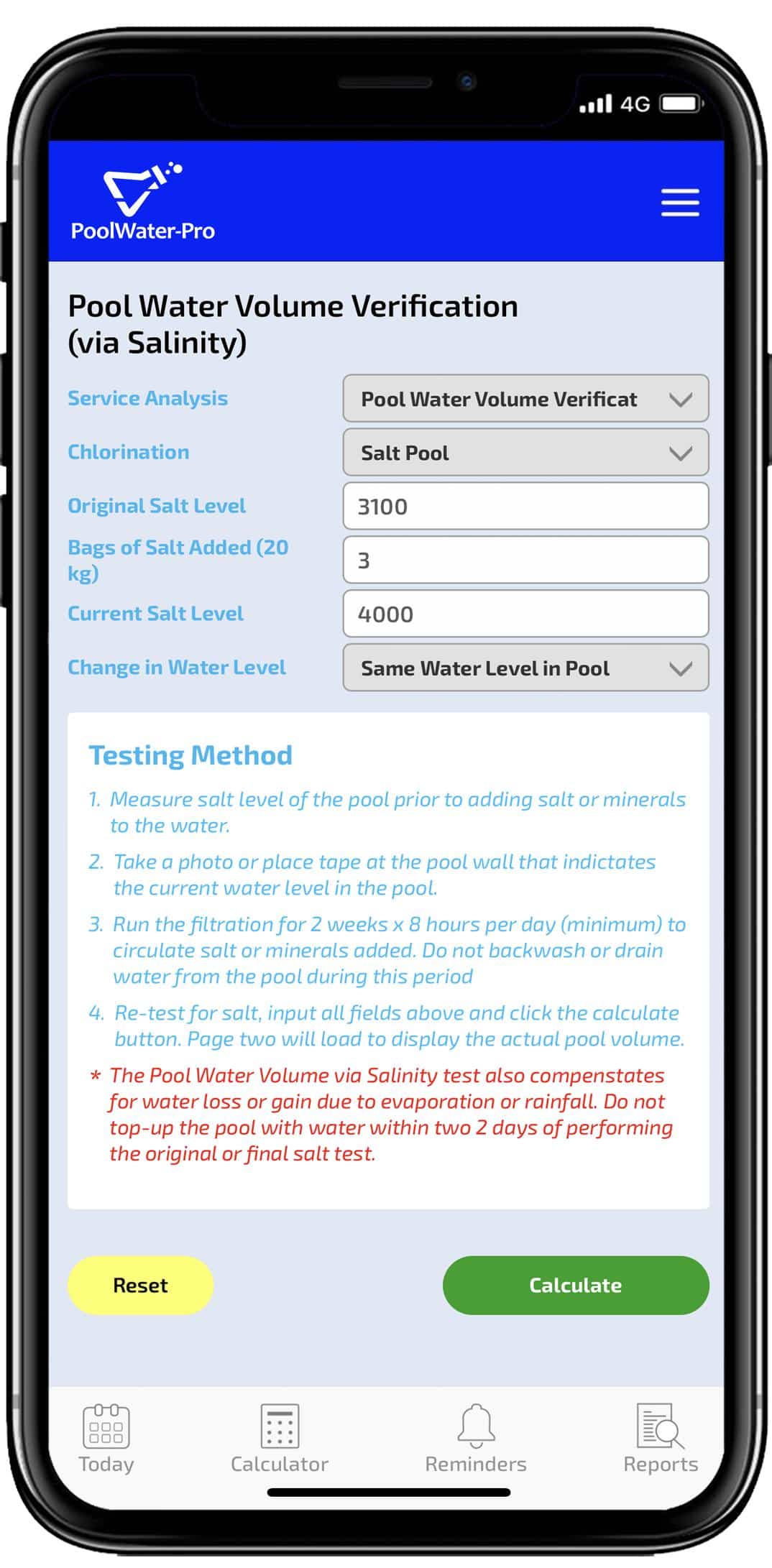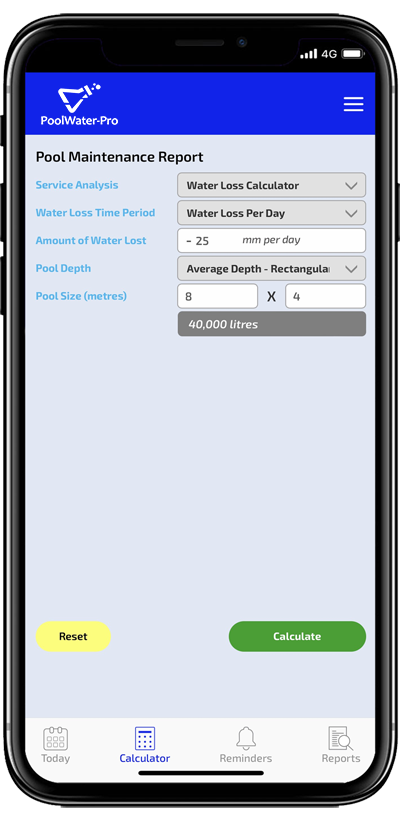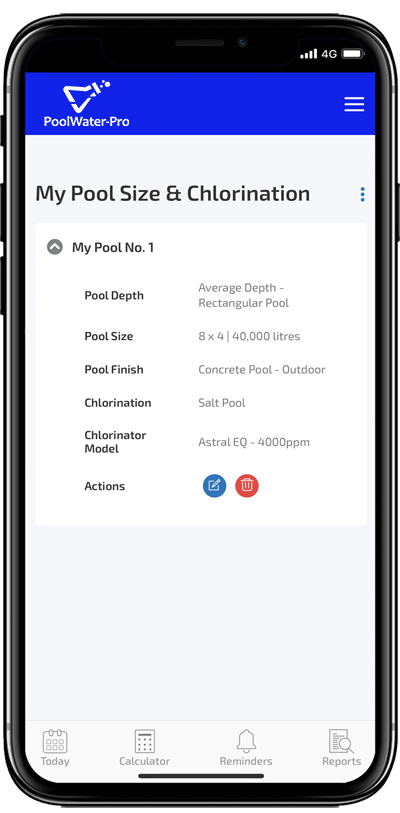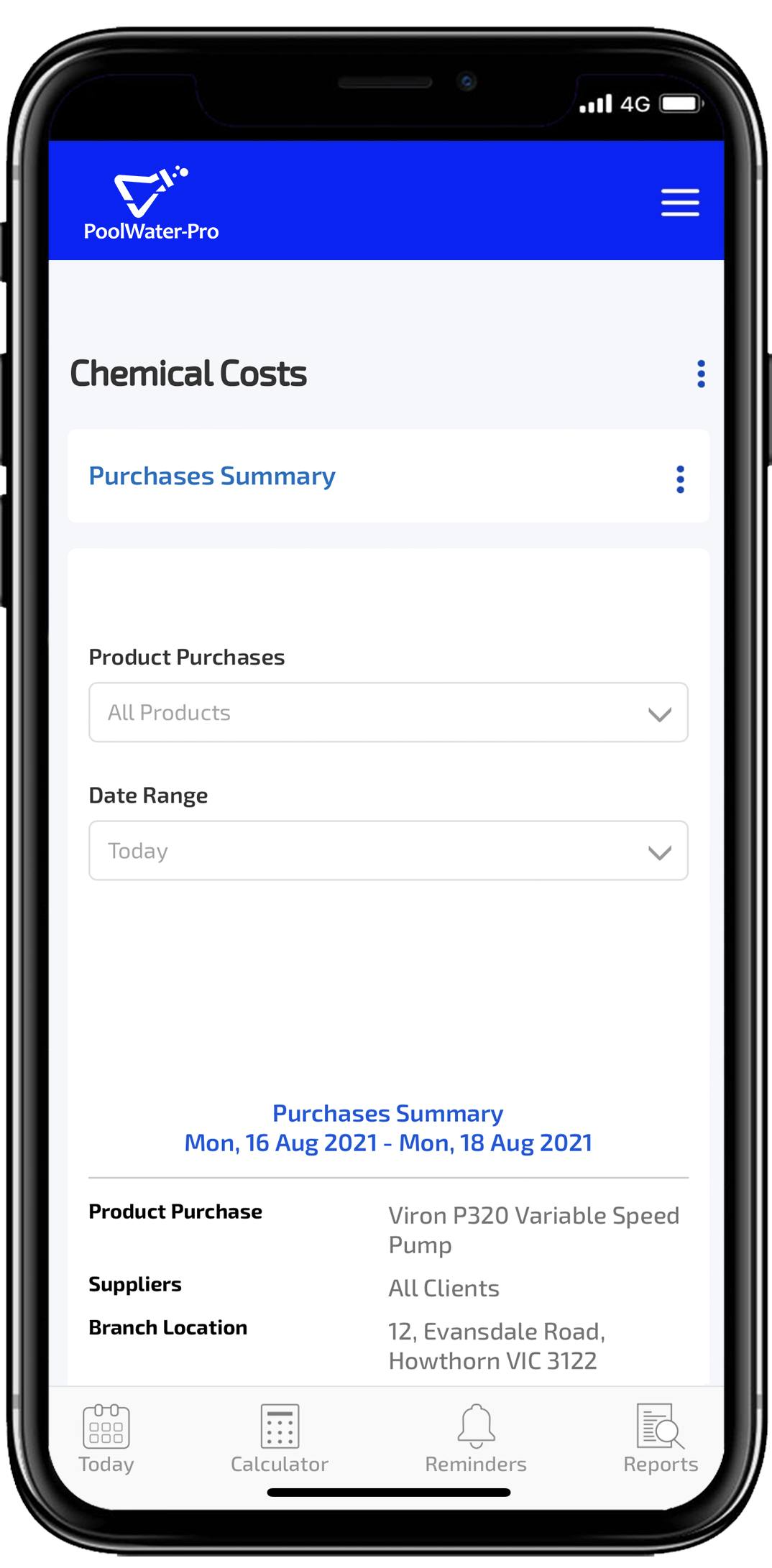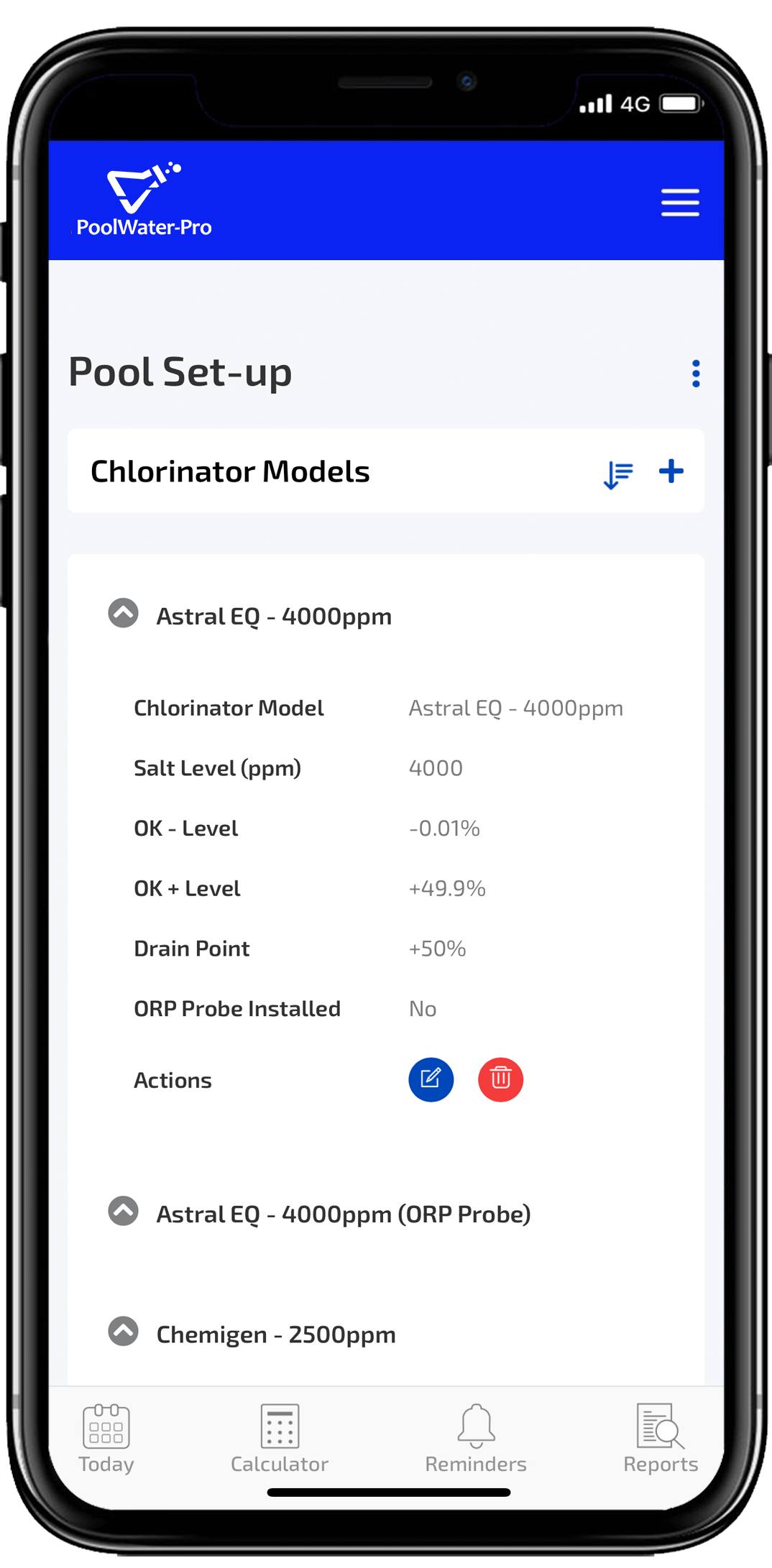Managing Chlorine Levels in Swimming Pools
Chlorine is the most common sanitiser used in swimming pools. Chlorine kills harmful organisms, bacteria, prevents algae growth and is an effective disinfectant. Chlorine also breaks down dirt, debris and other substances, which helps to keep your pool water clean and clear.
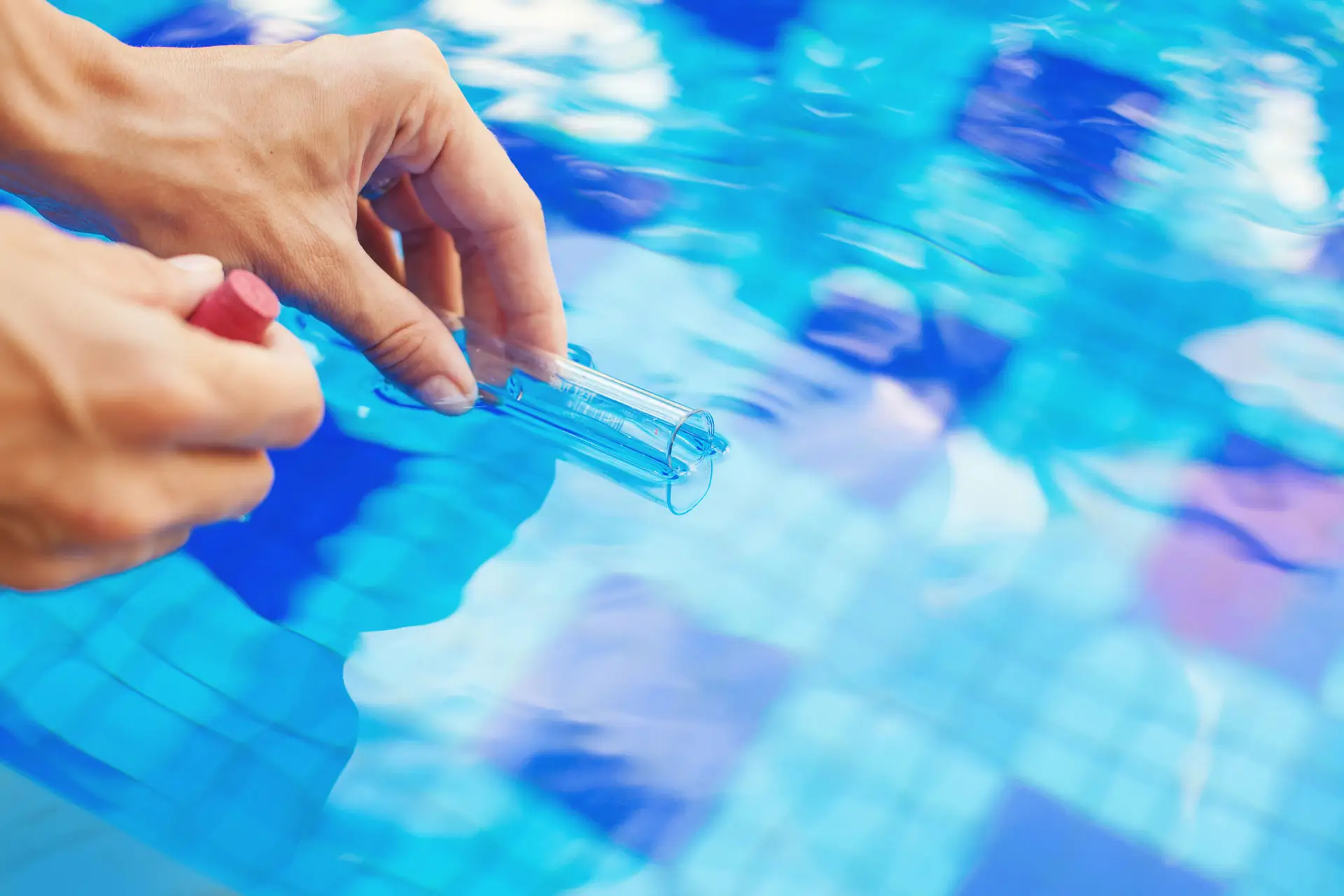
- Free, Combined & Total Chlorine
- Chlorine Lock
- Testing Chlorine Levels
- Managing Chlorine Levels
- The Impact of Stabiliser (CYA)
Free, Combined & Total Chlorine
Inexpensive water testing options measure free chlorine, with some also showing total chlorine, but they don’t include combined chlorine.
Free chlorine is the amount of chlorine that is available to sanitise and disinfect your pool.
Combined chlorine refers to chlorine that is no longer effective as a santiser, because it has already reacted with contaminants. It includes chloramines, which are formed when chlorine in the pool water comes in contact with organic material from swimmers, including oils, cosmetics, perspiration, or urine.
Chloramines greatly reduce the effectiveness of chlorine, can cause eye stinging and irritate respiratory systems. If you smell chlorine from a pool, it’s usually combined chlorine, not free chlorine.
Total chlorine is the sum of both free and combined chlorine present in your pool, but only free chlorine sanitises and kills bacteria.

Chlorine Lock
Also known as chloramine lock, chlorine lock is a condition where chlorine becomes locked-up and is unable to effectively sanitise the pool water.
Chlorine lock happens when combined chlorine is higher than free chlorine.
Symptoms
The symptoms of chlorine lock are chlorine odour, eye & skin irritation, cloudy water, ineffectiveness of chlorine, or one or more of the above.
Causes
The cause of chlorine lock could be high organic load, insufficient oxidation, pH imbalance, high stabiliser (CYA) levels or a combination of these factors.
Remedy
Non-Chlorine Shock
If the Free Chlorine level is high enough in your pool, you can use a non-chlorine shock to break chlorine lock.
Breakpoint Chlorination
Breakpoint chlorination involves adding enough chlorine to break the molecular bond of combined chlorine. This requires increasing the free chlorine level to ten times (x10) from its current readings.
Part or Fully Drain the Pool
If the cause of chlorine lock is high stabiliser (CYA), part-draining or fully draining your pool will be the only way to resolve the issue.

Testing Chlorine Levels
Regular testing is needed to ensure your pool chlorine levels remain within 1-3 ppm and safe for swimming.
The four different methods for testing the chlorine levels in your pool are test-strips, test kits, a photometer or professional water testing.
Test Strips
Test strips are simple and quick to use and are available from hardware stores, your local pool shop or online.
You dip the strip into the water for two seconds and after 15 seconds compare the colour of the pads on the strip with a colour comparison chart printed on the back of the test strip container.
Test Kits
Reagents are added to water samples, then colours are compared to determine chemical levels.
Photometer
A photometer is a high-end device that measures light that passes through a water sample, providing accurate chemical readings.
It is expensive for home use, but are used for professional testing such as in public swimming pools.
Professional Water Testing
Professional water testing is an option for pool owners looking for a convenient solution.
Many pool shops and pool service companies offer water testing services at minimal or no cost.
You simply bring a pool water sample from your pool into the pool shop or schedule for a pool technician to visit your home.
The water sample is tested using specialised equipment and the results along with any necessary chemical adjustments are provided.
Professional testing services provide accurate results and expert guidance, but may not suit frequent testing because of the potential for additional costs over time.
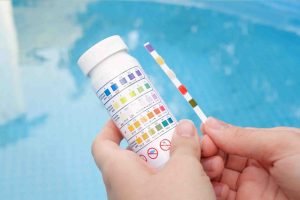
Managing Chlorine Levels
The pH levels in your pool impact the effectiveness of chlorine.
Chlorine becomes more active if the pH is low (acidic) and is consumed more quickly. If the pH is high (alkaline), chlorine’s ability to sanitise decreases.
The ideal range pH of your pool water is between 7.2 and 7.8.
Increase Chlorine Levels
If your pool is a chlorine pool, chlorine is either added manually or chlorine is produced by your chlorinator.
Manually Chlorinated
Tablets, liquid chlorine or granular chlorine will need to be added more regularly, the dosage quantity increased, or a combination of both.
Chlorinator
Increase chlorinator output, extend running times, or a balance of both.
Chlorinators require minimum levels of salt for chlorine generation and vary by manufacturer.
Regularly check your salt levels with an electronic meter to keep within manufacturer guidelines.
Chlorinator with ORP probe
Raise the ORP set-point, extend the filtration period, or a mixture of increasing both.
Use an electronic meter to regularly monitor salt levels to ensure they’re within manufacturer recommendations.
Decrease Chlorine Levels
Chlorine levels will reduce naturally with the help of UV from the sun.
Adding sodium thiosulphate to your pool will chemically reduce chlorine levels quickly, refer to manufacturer’s instructions for dosage quantity required.
Reducing the chlorine being added to your pool will also assist with bringing down the chlorine levels over time.
Manually Chlorinated
Reduce the quantity and or frequency of the amount of chlorine being added to your pool.
Chlorinator
Decrease chlorinator output, reduce running times, or a balance of both.
Chlorinator with ORP Probe
Lower the ORP set-point, reduce the filtration period, or a mixture of decreasing both.
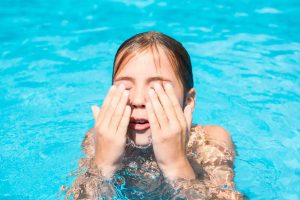
The Impact of Stabiliser (CYA)
Cyanuric acid, also known as stabliser should be used sparingly. It will help protect chlorine degradation from UV, but excessive use of stabiliser reduces the effectiveness of chlorine.
Try to keep stabiliser levels at 40 ppm for outdoor pools, 20 ppm if you have an ORP (chlorine) sensor probe.
Stabiliser is not required for indoor pools.

Inexpensive water testing options measure free chlorine, with some also showing total chlorine, but they don’t include combined chlorine.
Free chlorine is the amount of chlorine that is available to sanitise and disinfect your pool.
Combined chlorine refers to chlorine that is no longer effective as a santiser, because it has already reacted with contaminants. It includes chloramines, which are formed when chlorine in the pool water comes in contact with organic material from swimmers, including oils, cosmetics, perspiration, or urine.
Chloramines greatly reduce the effectiveness of chlorine, can cause eye stinging and irritate respiratory systems. If you smell chlorine from a pool, it’s usually combined chlorine, not free chlorine.
Total chlorine is the sum of both free and combined chlorine present in your pool, but only free chlorine sanitises and kills bacteria.

Also known as chloramine lock, chlorine lock is a condition where chlorine becomes locked-up and is unable to effectively sanitise the pool water.
Chlorine lock happens when combined chlorine is higher than free chlorine.
Symptoms
The symptoms of chlorine lock are chlorine odour, eye & skin irritation, cloudy water, ineffectiveness of chlorine, or one or more of the above.
Causes
The cause of chlorine lock could be high organic load, insufficient oxidation, pH imbalance, high stabiliser (CYA) levels or a combination of these factors.
Remedy
Non-Chlorine Shock
If the Free Chlorine level is high enough in your pool, you can use a non-chlorine shock to break chlorine lock.
Breakpoint Chlorination
Breakpoint chlorination involves adding enough chlorine to break the molecular bond of combined chlorine. This requires increasing the free chlorine level to ten times (x10) from its current readings.
Part or Fully Drain the Pool
If the cause of chlorine lock is high stabiliser (CYA), part-draining or fully draining your pool will be the only way to resolve the issue.

Regular testing is needed to ensure your pool chlorine levels remain within 1-3 ppm and safe for swimming.
The four different methods for testing the chlorine levels in your pool are test-strips, test kits, a photometer or professional water testing.
Test Strips
Test strips are simple and quick to use and are available from hardware stores, your local pool shop or online.
You dip the strip into the water for two seconds and after 15 seconds compare the colour of the pads on the strip with a colour comparison chart printed on the back of the test strip container.
Test Kits
Reagents are added to water samples, then colours are compared to determine chemical levels.
Photometer
A photometer is a high-end device that measures light that passes through a water sample, providing accurate chemical readings.
It is expensive for home use, but are used for professional testing such as in public swimming pools.
Professional Water Testing
Professional water testing is an option for pool owners looking for a convenient solution.
Many pool shops and pool service companies offer water testing services at minimal or no cost.
You simply bring a pool water sample from your pool into the pool shop or schedule for a pool technician to visit your home.
The water sample is tested using specialised equipment and the results along with any necessary chemical adjustments are provided.
Professional testing services provide accurate results and expert guidance, but may not suit frequent testing because of the potential for additional costs over time.

The pH levels in your pool impact the effectiveness of chlorine.
Chlorine becomes more active if the pH is low (acidic) and is consumed more quickly. If the pH is high (alkaline), chlorine’s ability to sanitise decreases.
The ideal range pH of your pool water is between 7.2 and 7.8.
Increase Chlorine Levels
If your pool is a chlorine pool, chlorine is either added manually or chlorine is produced by your chlorinator.
Manually Chlorinated
Tablets, liquid chlorine or granular chlorine will need to be added more regularly, the dosage quantity increased, or a combination of both.
Chlorinator
Increase chlorinator output, extend running times, or a balance of both.
Chlorinators require minimum levels of salt for chlorine generation and vary by manufacturer.
Regularly check your salt levels with an electronic meter to keep within manufacturer guidelines.
Chlorinator with ORP probe
Raise the ORP set-point, extend the filtration period, or a mixture of increasing both.
Use an electronic meter to regularly monitor salt levels to ensure they’re within manufacturer recommendations.
Decrease Chlorine Levels
Chlorine levels will reduce naturally with the help of UV from the sun.
Adding sodium thiosulphate to your pool will chemically reduce chlorine levels quickly, refer to manufacturer’s instructions for dosage quantity required.
Reducing the chlorine being added to your pool will also assist with bringing down the chlorine levels over time.
Manually Chlorinated
Reduce the quantity and or frequency of the amount of chlorine being added to your pool.
Chlorinator
Decrease chlorinator output, reduce running times, or a balance of both.
Chlorinator with ORP Probe
Lower the ORP set-point, reduce the filtration period, or a mixture of decreasing both.

Cyanuric acid, also known as stabliser should be used sparingly. It will help protect chlorine degradation from UV, but excessive use of stabiliser reduces the effectiveness of chlorine.
Try to keep stabiliser levels at 40 ppm for outdoor pools, 20 ppm if you have an ORP (chlorine) sensor probe.
Stabiliser is not required for indoor pools.

Introducing Effective Solutions
Simplify your pool maintenance routine with POOLWATER-PRO. Our software turns test-strips into accurate digital readings, right from your phone. Get instant alerts to know if your pool is safe to swim, plus any chemicals needed.
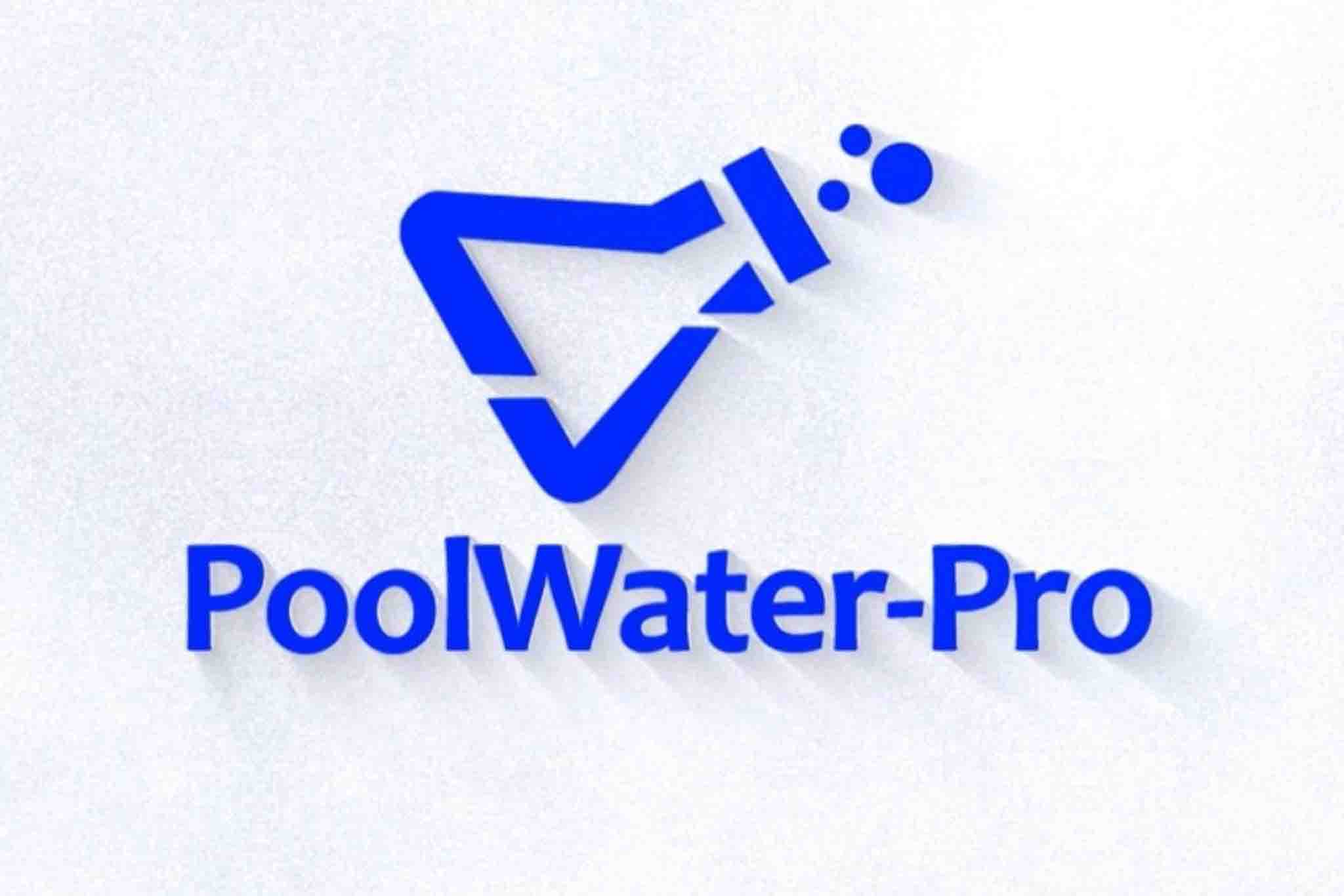
Introducing Effective Solutions
Simplify your pool maintenance routine with POOLWATER-PRO. Our software turns test-strips into accurate digital readings, right from your phone. Get instant alerts to know if your pool is safe to swim, plus any chemicals needed.

Your Path to Clarity
Watch this quick explainer video to see the platform’s features and how it can make pool care hassle-free.
Watch this quick explainer video to see the platform’s features and how it can make pool care hassle-free.




